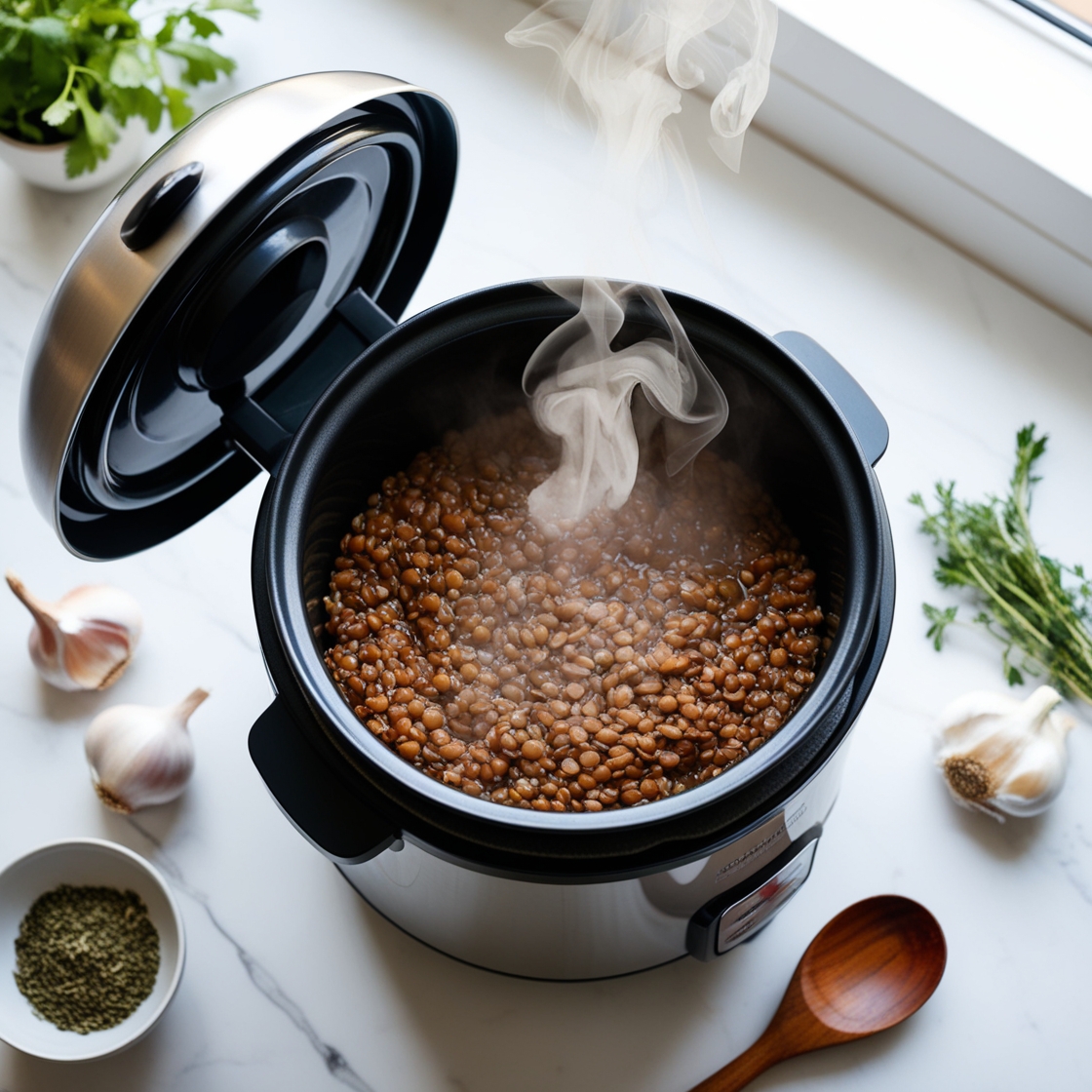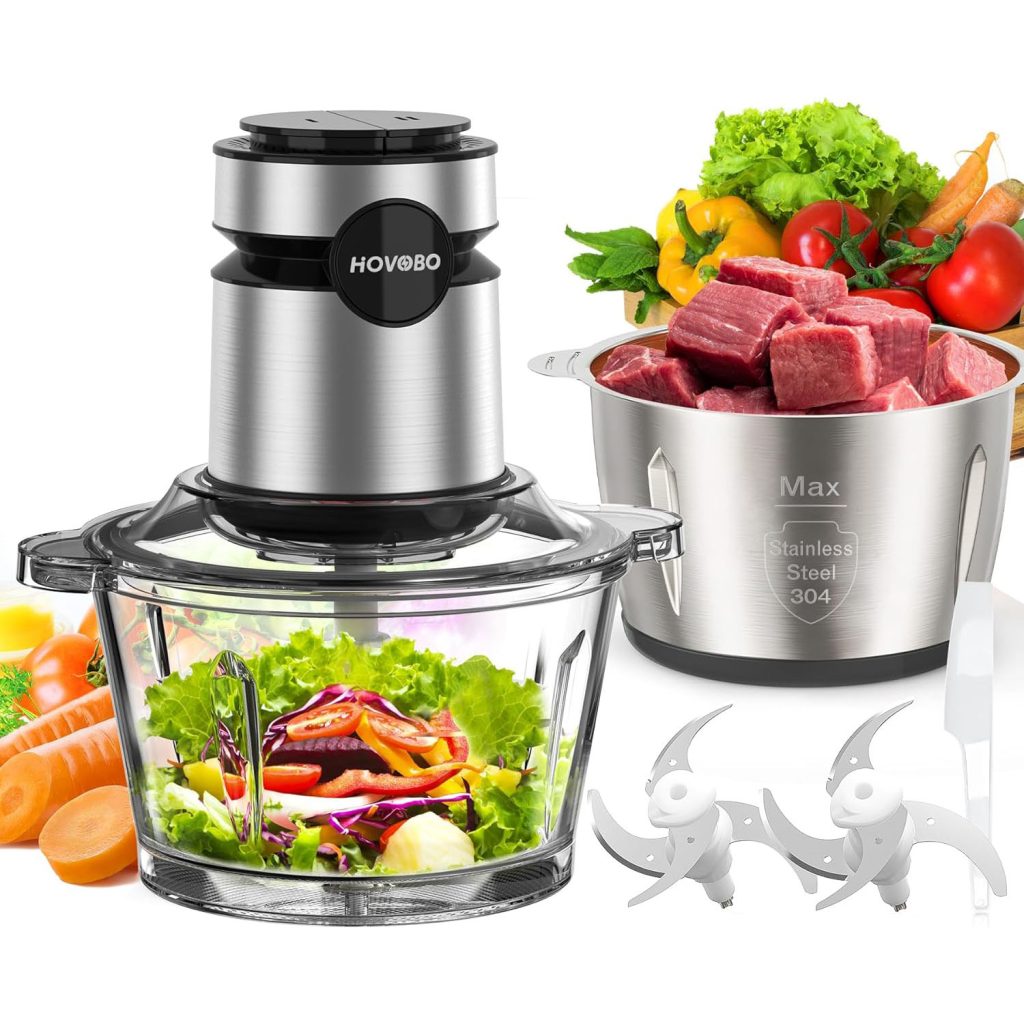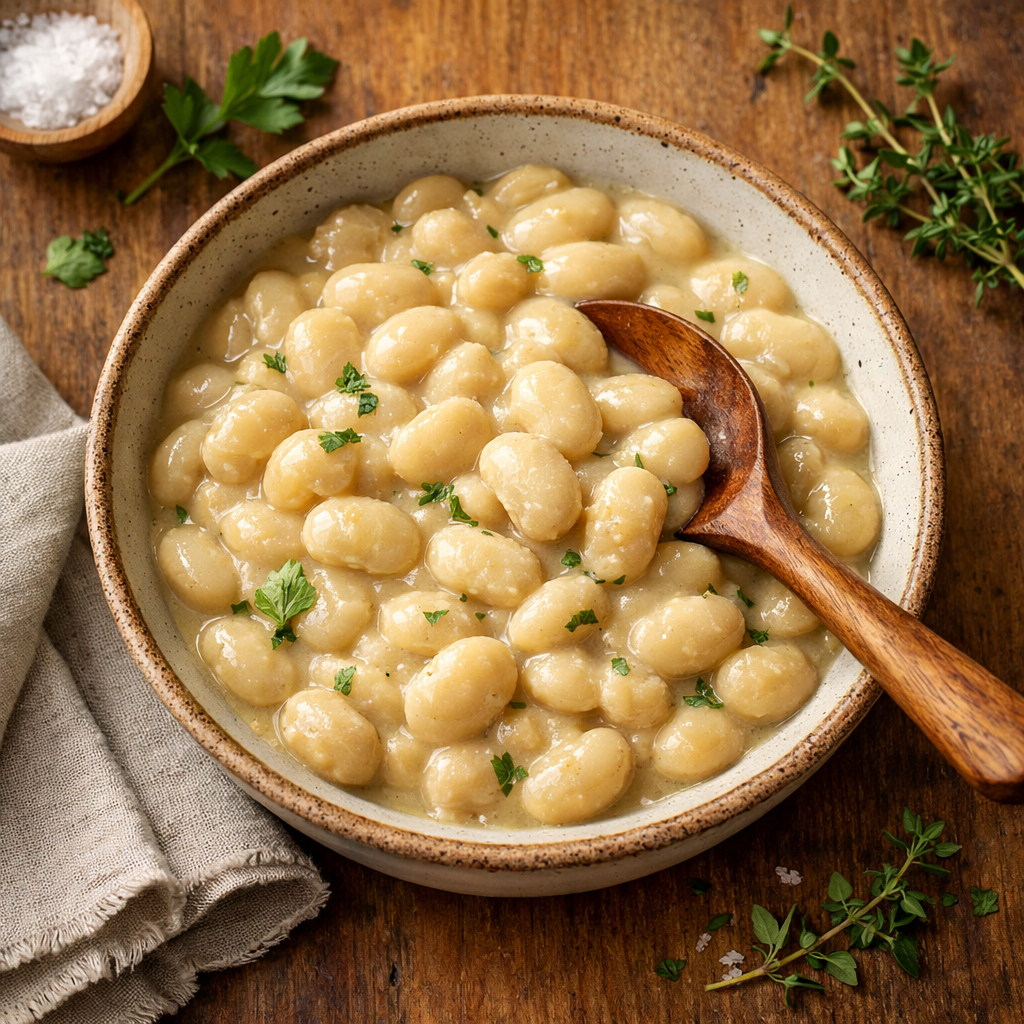It was a typical Wednesday night when I found myself standing in my kitcfhen after a 12-hour workday, facing a bag of dried lentils that had been sitting in my pantry for months. The thought of constantly watching a pot on the stove felt overwhelming. That’s when I glanced at my rice cooker sitting idle on the counter, and something clicked. What if I could cook lentils in a rice cooker the same way I made perfect rice?
That single experiment transformed my weeknight dinners. Now, three years later, this method has become my go-to for getting nutritious meals on the table with almost zero effort.
How I Discovered Cooking Lentils in Rice Cooker
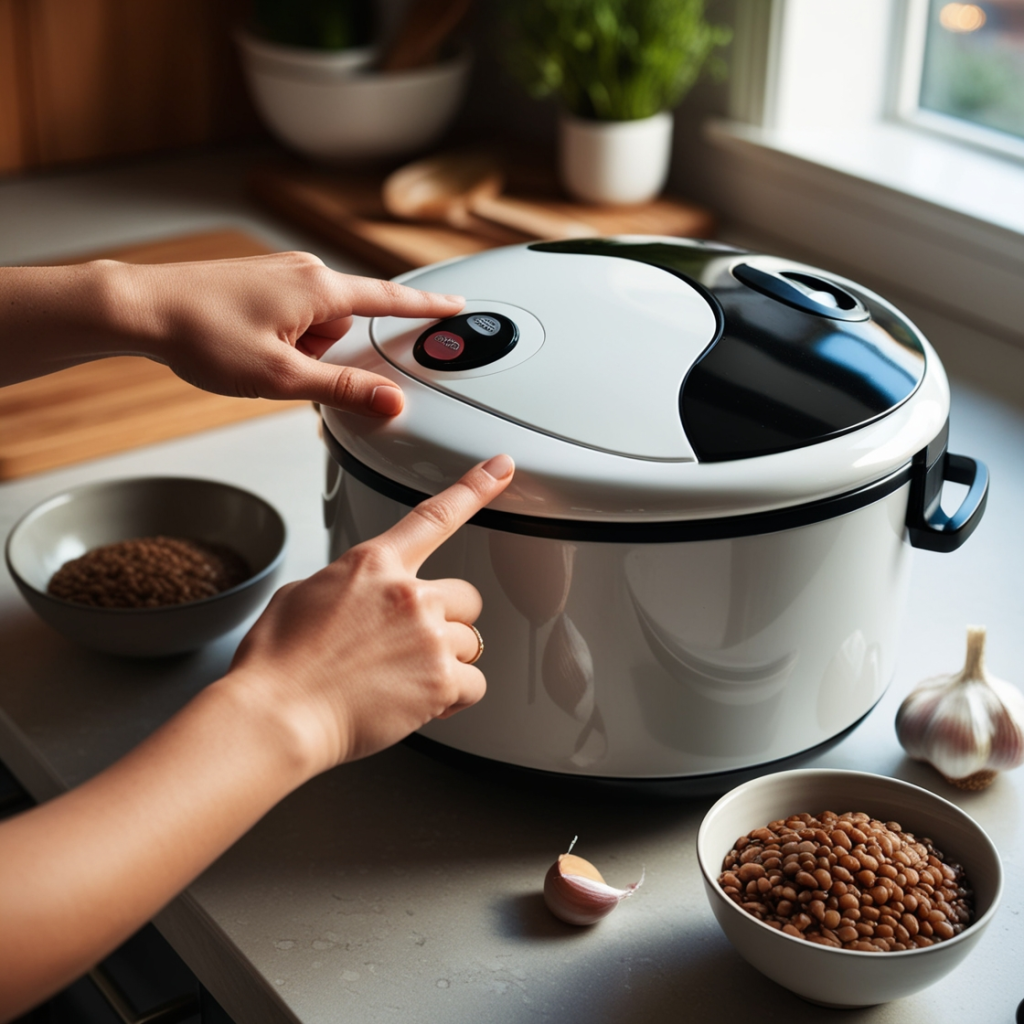
Working long hours and trying to eat healthier felt like competing priorities. I’d read countless meal prep articles, but spending hours in the kitchen on weekends didn’t appeal to me.
One night, I decided to experiment. I rinsed a cup of brown lentils, tossed them into my rice cooker with some broth and garlic, pressed the button, and walked away. Forty minutes later, I returned to find perfectly cooked, fluffy lentils that hadn’t required any stirring or monitoring.
That moment felt revolutionary. Suddenly, protein-rich meals were accessible on my busiest days. I started experimenting with different varieties, spices, and additions, discovering my rice cooker was far more versatile than I’d imagined.
Why Your Rice Cooker is Perfect for Lentils
Rice cookers maintain consistency, even heat throughout the cooking process. Unlike stovetop cooking, where heat comes from below, rice cookers surround the inner bowl with controlled warmth. This prevents hot spots that cause uneven cooking.
The automatic shut-off feature is a game-changer. Rice cookers detect when liquid has been absorbed and switch to warming mode. You’ll never return to burned or undercooked lentils. The sealed environment traps steam perfectly, creating ideal conditions for even softening.
The hands-off nature eliminates constant attention. No adjusting heat, checking water levels, or worrying about overflow. I can start a batch and focus on other tasks. The consistency is remarkable—same results every time.
For anyone who wants the absolute best in automatic cooking, the Zojirushi Pressure Induction Heating Rice Cooker & Warmer is a dream. With its pressure and induction mechanisms, it adapts constantly to maintain optimal cooking conditions—no more guesswork. It’s as much a smart kitchen assistant as a cooker. Use it for your experimental lentil batches, and it’ll adjust on the fly to deliver perfect texture every time.

Zojirushi NP-NWC10XB Pressure Induction Heating Rice Cooker & Warmer, 5.5 Cup, Stainless Black, Made in Japan
- Capacity Up to 5.5 cups / 1.0 liter
- Strong solid steel foldable frame
- Menu settings include: white (regular, softer or harder), umami, mixed, sushi/sweet, Jasmine, porridge, congee, brown, GABA brown, steel cut oatmeal, rinse-free and quick cooking
- Advanced fuzzy logic technology with AI (Artificial Intelligence): AI technology “learns” and adjusts the cooking cycle to get perfect results
Choosing the Right Lentils for Your Rice Cooker
Brown and green lentils hold their shape beautifully, offering a slightly peppery flavor and firm texture. These need about 2.5 cups of liquid per cup of dried lentils and take 35-40 minutes.
Red and yellow lentils cook faster and break down into a creamier consistency. They’re perfect for dal-style dishes. These require only 1.75 to 2 cups of liquid and finish in 20-25 minutes. Black lentils hold their shape exceptionally well, making them ideal for salads.
I keep all three varieties in my pantry because each serves different purposes. The key is adjusting cooking times and liquid ratios based on your chosen variety.
Red Lentils vs. Brown Lentils
Red lentils are hulled, which explains their quick cooking time and soft texture. They practically melt into a thick, porridge-like consistency that’s perfect for creamy dishes, grain bowl bases, or pairing with rice.
Brown lentils maintain their integrity even after thorough cooking. This makes them perfect for cold salads, grain bowls where you want distinct textures, or soups where you don’t want them to disintegrate. Their earthier, more robust flavor stands up better to bold seasonings.
The Perfect Liquid-to-Lentil Ratio
For brown and green lentils, use 2.5 cups of liquid for every cup of dried lentils. This produces tender lentils that are fully cooked but not mushy.
Red lentils need 2 cups of liquid per cup of dried lentils, sometimes reducing to 1.75 cups for thicker consistency. For firmer lentils, reduce liquid by a quarter cup. For softer lentils, add an extra quarter to half cup.
Vegetable broth adds depth and richness, requiring fewer seasonings. When using water, compensate with aromatics like garlic, onion, and robust spices.
My Go-To Lentils in Rice Cooker Recipes
These two recipes have become weekly staples because they’re foolproof, nutritious, and versatile. The first uses brown lentils with Mediterranean herbs, creating a side dish that pairs with virtually anything. The second features red lentils with Indian spices and coconut milk for a complete meal.
Simple Garlic Herb Lentils
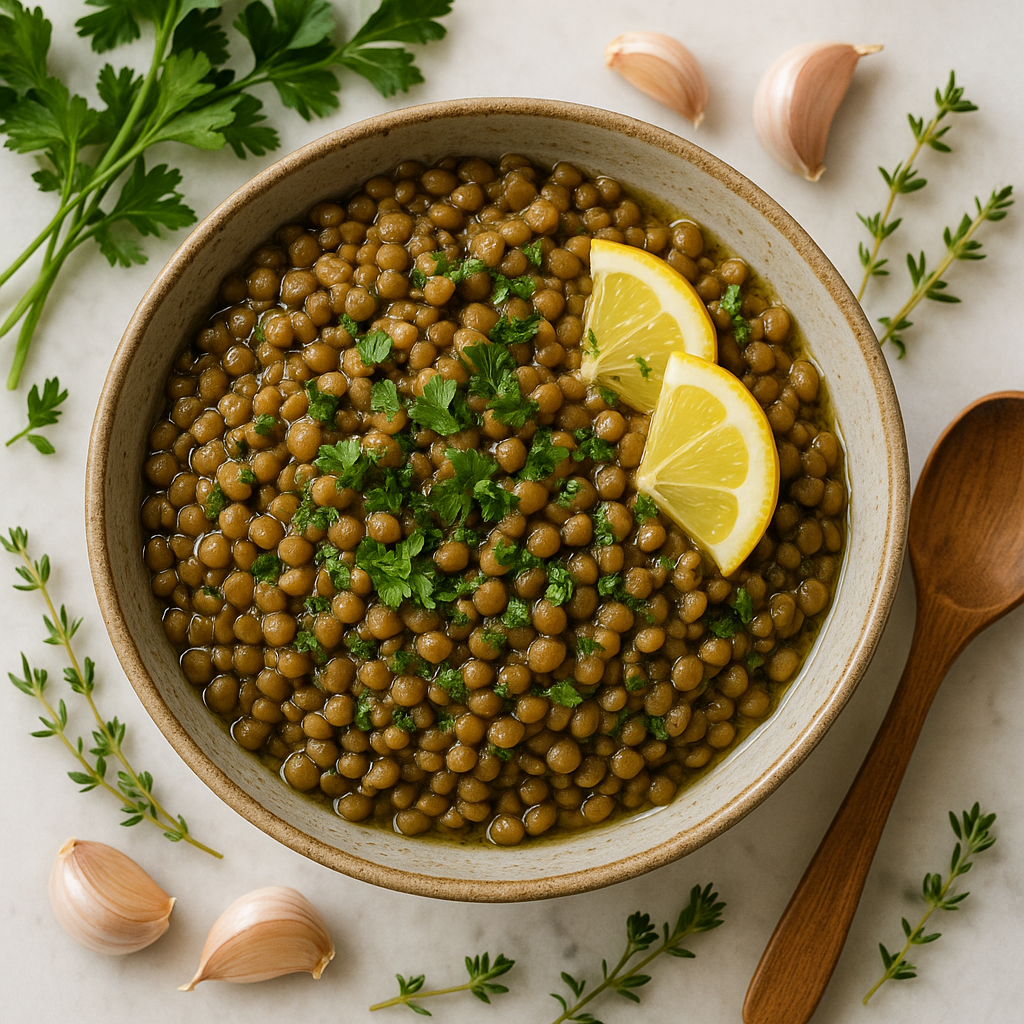
Ingredients:
- 1 cup brown or green lentils, rinsed and drained
- 2.5 cups vegetable broth (or water)
- 3 cloves garlic, minced
- 1 tablespoon olive oil
- 1 teaspoon dried thyme
- 1 teaspoon dried oregano
- 1/2 teaspoon cumin
- 1/2 teaspoon sea salt
- 1/4 teaspoon black pepper
- 1 bay leaf
- 1 tablespoon fresh lemon juice (added after cooking)
- 2 tablespoons fresh parsley, chopped (for garnish)
Instructions:
- Add olive oil to the rice cooker and turn on the “cook” setting
- Add minced garlic and sauté for 1-2 minutes until fragrant
- Add rinsed lentils, vegetable broth, thyme, oregano, cumin, salt, pepper, and bay leaf
- Stir everything together gently
- Close the rice cooker lid and set to “cook” or “white rice” setting
- Cook for approximately 30-40 minutes, or until the rice cooker automatically switches to “warm”
- Let stand for 5 minutes with the lid closed
- Remove bay leaf, fluff lentils with a fork
- Stir in fresh lemon juice
- Garnish with fresh parsley before serving
Cooking Time: 35-45 minutes
Yield: 4 servings
Health Benefits: High in plant-based protein (18g per serving), rich in iron and folate, excellent source of fiber (15g per serving), supports heart health and digestive wellness, low glycemic index
Turmeric Coconut Red Lentils
Ingredients:
- 1 cup red lentils, rinsed and drained
- 1.75 cups water
- 1/2 cup coconut milk (light or full-fat)
- 1 tablespoon coconut oil
- 1 small onion, finely diced
- 2 teaspoons fresh ginger, grated
- 2 cloves garlic, minced
- 1 teaspoon turmeric powder
- 1/2 teaspoon curry powder
- 1/2 teaspoon coriander
- 1/4 teaspoon cayenne pepper (optional)
- 1/2 teaspoon sea salt
- 1 cup fresh spinach, chopped (added after cooking)
- Fresh cilantro for garnish
- Lime wedges for serving
Instructions:
- Turn rice cooker to “cook” setting and add coconut oil
- Sauté diced onion for 2-3 minutes until translucent
- Add ginger and garlic, cook for another minute
- Add turmeric, curry powder, coriander, and cayenne; stir for 30 seconds
- Add rinsed red lentils and stir to coat with spices
- Pour in water and coconut milk, add salt
- Stir well and close the rice cooker lid
- Cook on “white rice” setting for 20-25 minutes
- When cooker switches to “warm,” let stand for 5 minutes
- Stir in fresh spinach until wilted
- Garnish with cilantro and serve with lime wedges
Cooking Time: 25-30 minutes
Yield: 4 servings
Health Benefits: Anti-inflammatory properties from turmeric, quick-cooking red lentils retain nutrients, medium-chain fatty acids from coconut oil, rich in vitamin A from spinach, supports immune system, easily digestible protein.
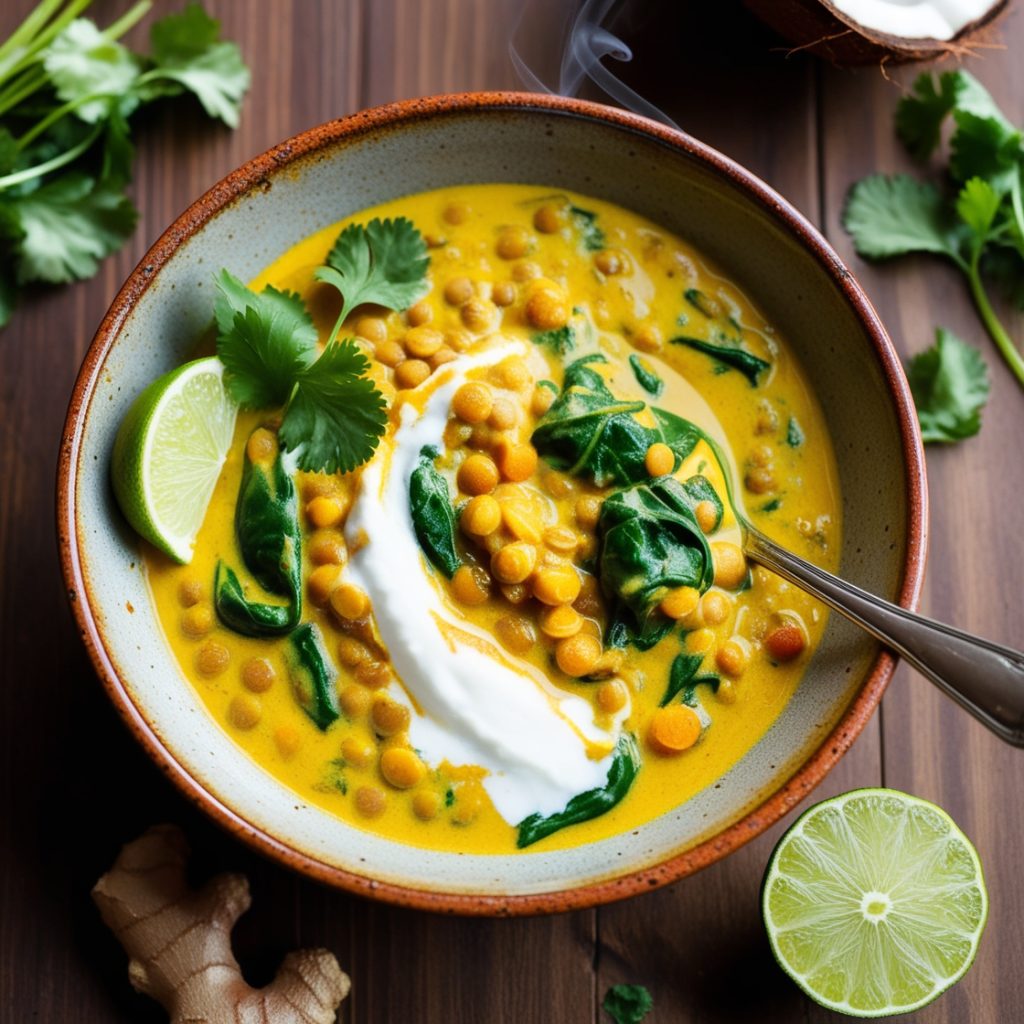
Flavor Variations and Add-Ins
Spice combinations change everything. Smoked paprika and cumin create a Spanish profile, while garam masala and ginger offer Indian flavors. Bay leaves or a parmesan rind during cooking add incredible depth.
I often add diced carrots, celery, or bell peppers at the beginning.
Chopping vegetables gets fast with a tool like the 2-Speed 500W Electric Food Processor from Sonia’s NutriHub, so you don’t waste precious time before tossing everything into the cooker.
Main Benefits:
Enhanced safety features with automatic stopping and overheat protection.
Efficient 500W motor with two-speed settings for quick and thorough processing.
2L large capacity bowls for handling large quantities without flavor mixing.
Heartier vegetables like sweet potatoes go in with the lentils, while delicate greens get stirred in at the end. Cherry tomatoes burst beautifully when added during the last ten minutes.
Crispy tofu cubes, sautéed mushrooms, or roasted chickpeas on top transform lentils from a side into a complete meal.
Mediterranean-Style Additions
I add sun-dried tomatoes, kalamata olives, and fresh spinach to brown lentils. Once cooked, I stir in crumbled feta cheese and a splash of red wine vinegar. The briny olives and tangy feta perfectly complement the earthy lentils.
Fresh oregano goes in during cooking, while basil and parsley get added afterward to preserve their bright flavors. A drizzle of quality olive oil before serving brings everything together.
Asian-Inspired Flavors
For Asian-inspired lentils, I use ginger, garlic, and scallions. A splash of soy sauce or tamari goes in with the cooking liquid, finished with toasted sesame oil. Sometimes I add miso paste for extra umami.
These work great over steamed vegetables or as a base for Buddha bowls, topped with pickled vegetables, avocado, and crispy tempeh. Sesame seeds and nori strips add the perfect finishing touch.
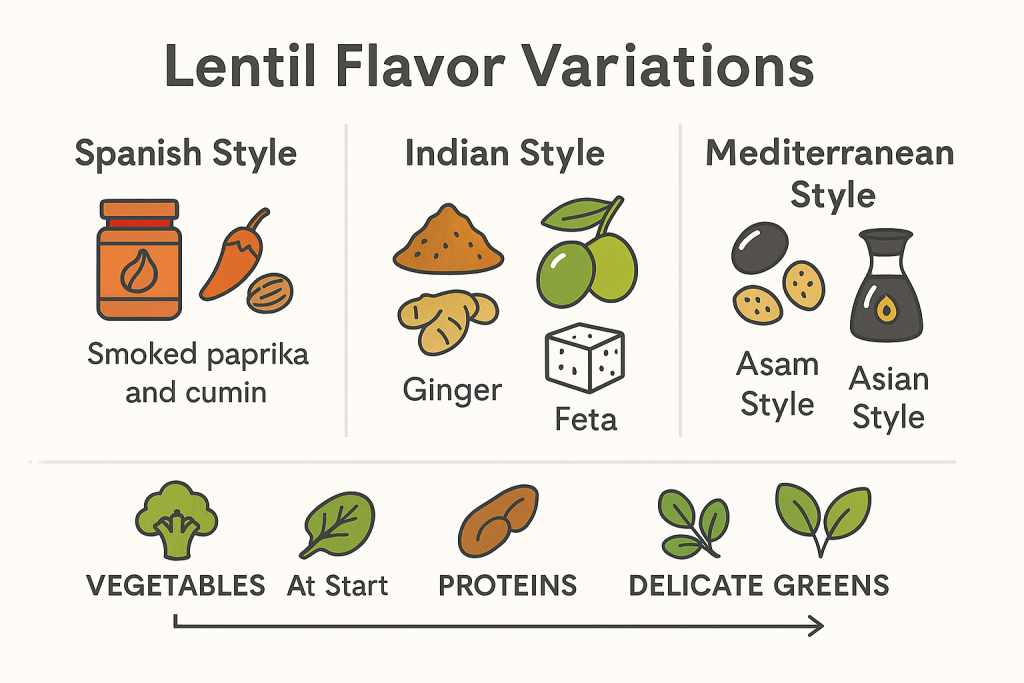
Common Mistakes When Making Lentils in Rice Cooker
Not rinsing lentils creates a gritty final dish. I always rinse them in a fine-mesh strainer until the water runs clear—it only takes a few seconds.
Using incorrect liquid ratios leads to mushy or undercooked lentils. Measure carefully and adjust based on the specific variety. Adding salt too early can toughen lentil skins, so I add it halfway through or at the end.
Opening the lid to check progress releases steam and drops the temperature, extending cooking time and affecting texture. Trust the process and only open once the rice cooker switches to warm mode.
Tips for Meal Prep Success
Every Sunday, I make two or three different varieties, giving me options throughout the week. I portion them into glass containers, storing some refrigerated for immediate use and freezing the rest. Properly stored lentils last three to four days refrigerated and up to three months frozen.
Reheating is simple—add a splash of water or broth to refrigerated lentils and microwave for two minutes. Frozen lentils go straight from freezer to microwave, taking about four minutes. I also reheat them on the stovetop with a bit of liquid.
For portion control, I use one-cup containers. One cup of cooked lentils provides substantial protein and fiber, making it perfect for a meal base.
If you’re serious about meal prep and consistency, the OXO 11 lb Digital Food Scale is a game-changer. It gives you precise measurements for lentils, grains, and even portioned leftovers, helping you stay on track with balanced portions every time. Its sleek design and pull-out display make it one of those tools you’ll wonder how you ever lived without.
OXO Good Grips 11-Pound Stainless Steel Kitchen Scale with Pull-Out Display – Black
- Stainless Steel is Smudge and fingerprint-resistant
- Zero function for taring the scale before weighing additional ingredients
- Digital screen with large, easy-to-read numbers
- Removable platform for convenient cleaning
Nutritional Benefits of Regular Lentil Consumption
A single cup of cooked lentils delivers about 18 grams of plant-based protein and 15 grams of fiber, supporting digestive health and keeping you full for hours.
Lentils are rich in iron and folate, essential for energy production and cell function. The iron is better absorbed when paired with vitamin C, so I often squeeze lemon juice over my finished dish.
Lentils have a low glycemic index, meaning they don’t spike blood sugar levels. This makes them ideal for managing diabetes or maintaining stable energy. The combination of protein, fiber, and complex carbohydrates provides sustained energy without crashes.
Serving Ideas and Meal Combinations
For breakfast, I warm lentils with curry powder and top with sautéed spinach and sliced avocado. For lunch, they become the protein base for grain bowls with roasted vegetables, avocado, and tahini dressing. Dinner might feature lentils alongside grilled salmon and steamed broccoli, or mixed into vegetable soup.
As a side dish, lentils pair beautifully with roasted vegetables, baked tempeh, or a simple green salad. I’ve replaced rice or potatoes with lentils for dinner and found them far more satisfying.
Leftover lentils inspire creativity. I’ve blended them into veggie burger patties, stirred them into pasta sauce for added protein, and used them as a base for vegetarian shepherd’s pie.
Quick Weeknight Meals
My 15-minute weeknight meals rely on pre-cooked lentils. I toss them with sautéed garlic and kale, top with goat cheese, and dinner is done. Grain bowls come together instantly—quinoa or rice on the bottom, lentils in the middle, roasted vegetables on top, and a quick tahini or peanut sauce drizzled over everything.
For wraps and sandwiches, I mash lentils slightly with avocado and spread them on whole grain bread with lettuce, tomato, and sprouts. Sometimes I mix them with hummus for extra creaminess. In tortillas, they pair perfectly with black beans, salsa, and avocado for a quick burrito.
Embracing the Simple Method
This simple method has genuinely improved my eating habits and reduced my reliance on takeout. The confidence I’ve gained from consistently producing delicious, healthy meals has extended to other areas of my cooking too.
I encourage you to experiment with your rice cooker. Start with one of these basic recipes, then let your creativity guide you. Try different spice combinations, add your favorite vegetables, or create fusion dishes. The beauty of this method is that it’s nearly impossible to mess up—the rice cooker does the work while you focus on living your life.
Whether you’re cooking for one or feeding a family, whether you have five minutes or an hour, this technique adapts to your needs. Your rice cooker is capable of so much more than perfect rice—it’s your partner in creating nourishing, flavorful meals that support your health without demanding hours in the kitchen.
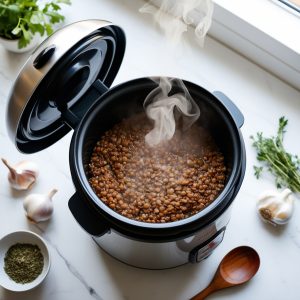
*We may earn a commission for purchases made using our links. Please see our disclosure to learn more.

